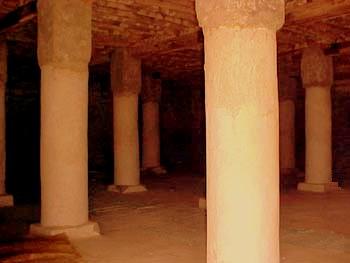Somalia Horn of Africa
Architecture

17th century masque in hafun.
Somali architecture is a rich and diverse tradition of engineering and designing multiple different construction types such as stone cities, castles, citadels, fortresses, mosques, temples, aqueducts, lighthouses, towers and tombs during the ancient, medieval and early modern periods in Somalia, as well as the fusion of Somalo-Islamic architecture with Western designs in contemporary times.
In ancient Somalia, pyramidical structures known in Somali as taalo were a popular burial style with hundreds of these drystone monuments scattered around the country today. Houses were built of dressed stone similar to the ones in Ancient Egypt and there are examples of courtyards and large stone walls such as the Wargaade Wall enclosing settlements.
The peaceful introduction of Islam in the early medieval era of Somalia's history brought Islamic architectural influences from Arabia and Persia, which stimulated a shift in construction from drystone and other related materials to coral stone, sundried bricks, and the widespread use of limestone in Somali architecture. Many of the new architectural designs such as mosques were built on the ruins of older structures, a practice that would continue over and over again throughout the following centuries.